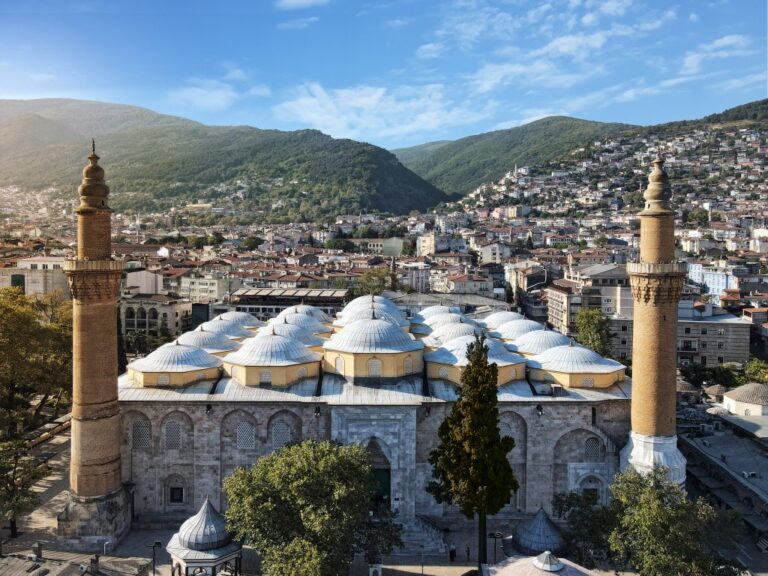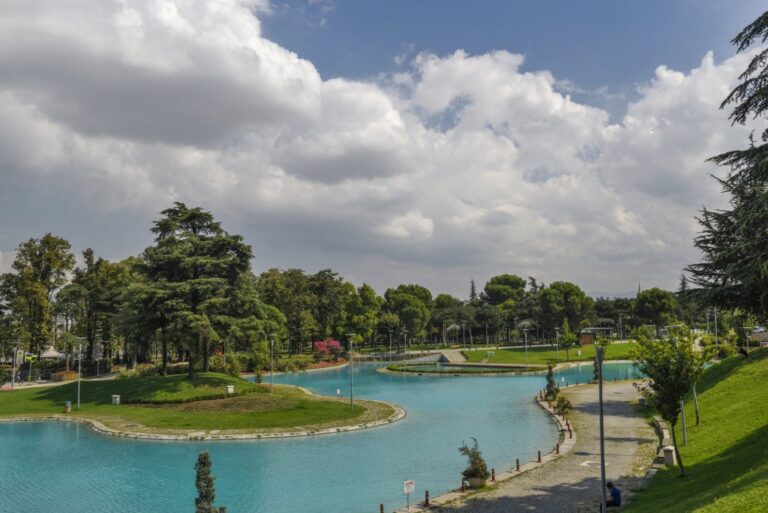Green Mosque – A Historical Gem in Bursa, Turkey
Green Mosque (Yeşil Cami), located in Yeşil district of Bursa, was commissioned by Çelebi Mehmet, the son of Yıldırım Bayezıt, in 1419.
The mosque possibly derived its name from the green ceramic decorations that once adorned its minarets. Evliya Çelebi, who visited Bursa in 1640, described the mosque’s minarets and domes as also being adorned with green ceramics.
Designed by Hacı İvaz b. Ahi Bayezıt (Hacı İvaz Paşa) and embellished by Nakkaşı Ali b. İlyas Ali, the mosque’s construction concluded in December 1419, while the decorative work was completed in 1424.
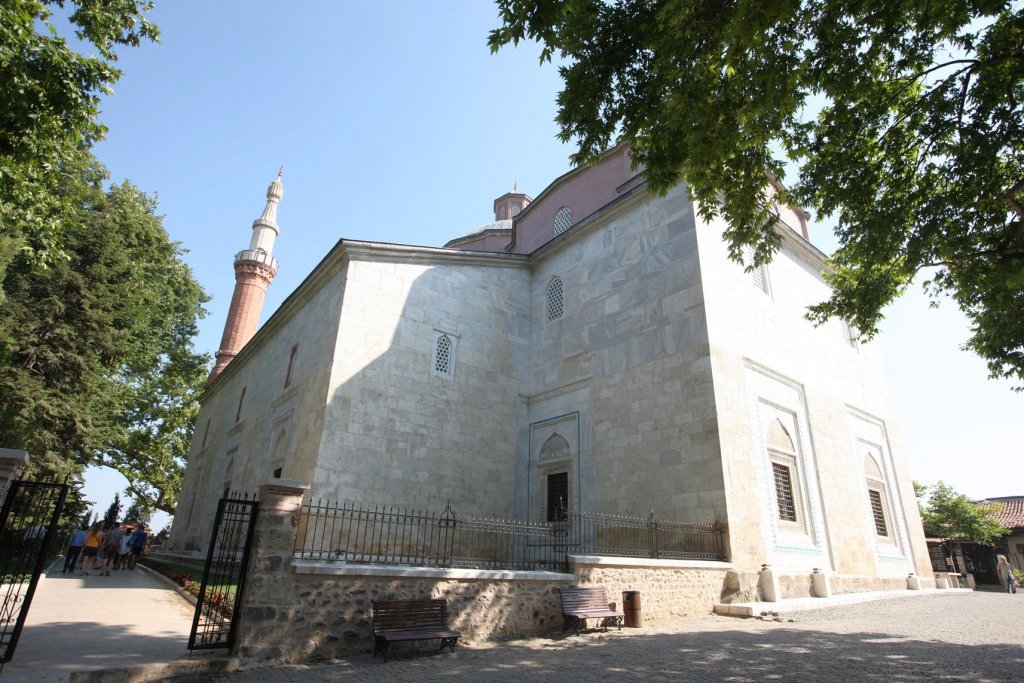
Architecture and Design
An exemplary representation of T-shaped winged mosques, Yeşil Cami shares similarities with its predecessor, Yıldırım Camii. Although it lacks a last congregation area, the north facade’s arch supports indicate plans for a five-sectioned last congregation area, which couldn’t be realized for unknown reasons.
Floor Plan
The mosque’s floor plan consists of a central area, a smaller mihrap front area to the southeast, and two side eyvans to the northeast and southwest. Additionally, adjacent to these eyvans are rooms with doors opening into the central area. There are also two larger rooms on either side of the entrance corridor.
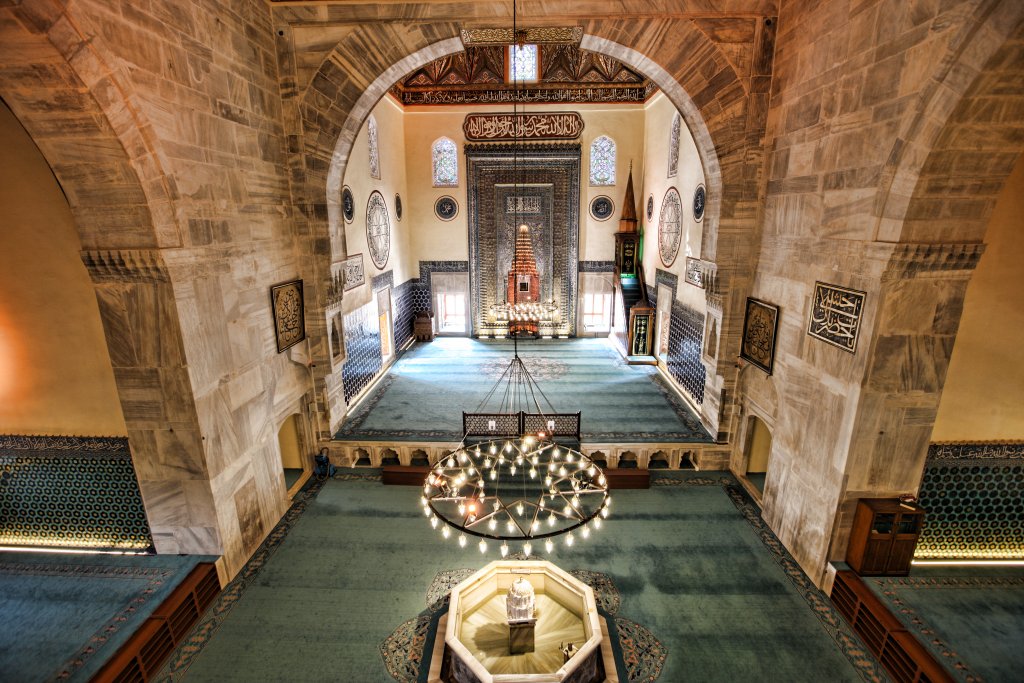
Main Entrance
The main entrance on the north facade features remarkable and intricate carvings. Some authors suggest that the planned last congregation area remained unfinished due to Çelebi Sultan Mehmet’s passing.
Upon entering through the main entrance, a corridor with a width of 2.30 meters, resembling a church narthex, leads to the first floor, which was once used for state affairs.
Central Worship Area
The central worship area is covered by a 13-meter-diameter dome with a height of 25 meters. Prismatic triangles support the central dome, featuring four windows, three of which are open, and one is blind. An octagonal skylight and a high-edged octagonal pool rest beneath the dome on the floor.
The walls of the central area are dark-colored, while the arches are made of white marble. The marble arch connecting the central dome to the mihrab dome, known as the Bursa arch, consists of seven rows of stalactites connected to a supporting cushion, with five rows of stalactite niches in the center. At the north side of the central area, two muezzin platforms are located, with the “hünkar mahfili” (imperial lodge) balcony positioned above them.
Mihrab Area
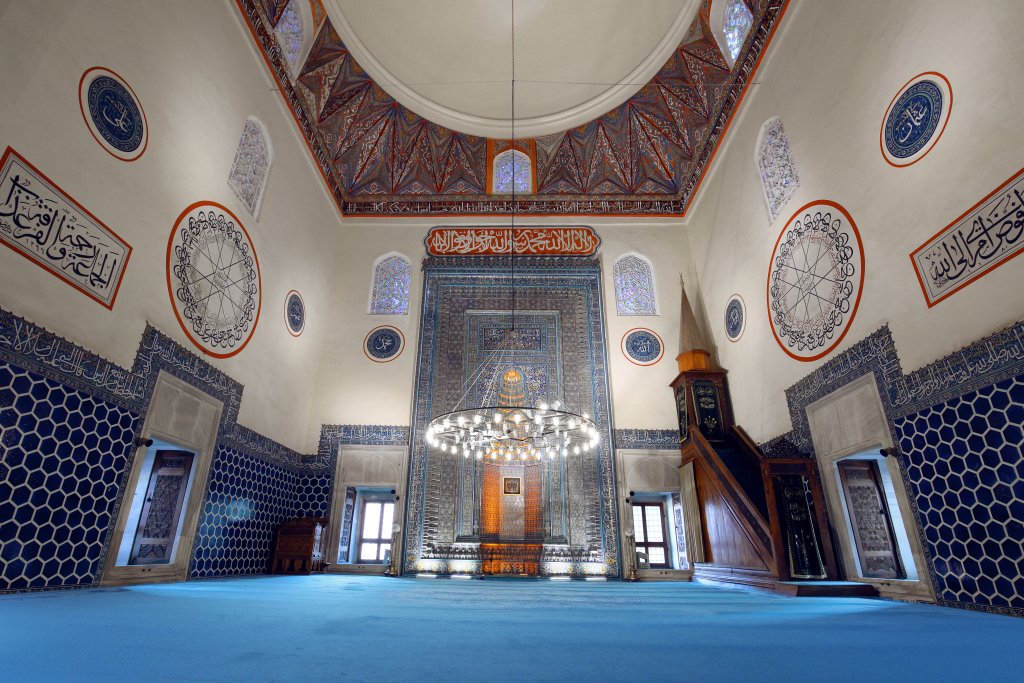
The mihrap dome covers a raised southeast area, accessed by a three-step staircase from the central area. This dome is supported by a 2.84-meter-high drum.
The mihrab, measuring 10.67 meters in height and 6 meters in width, is exquisitely adorned with the finest examples of ceramic art. The calligraphy features “sülüs” and “kufi” styles, forming a sequence of inscriptions along with twelve rows of stalactites, geometric motifs, a water motif, circular profile, and floral interior ledge. Above the mihrab kavsara is a mirror, and above that, a crown composed of tulip motifs. Adjacent to the mihrab’s right (west) side is a narrow staircase leading to the “minber,” a finely crafted wooden pulpit with a hexagonal dome and double-sided railings.
On the southeast and northeast of the mihrab area, two square rooms, each with an area of approximately 6.50 meters, are located. These rooms have octagonal drums supporting domes with 32 segments.
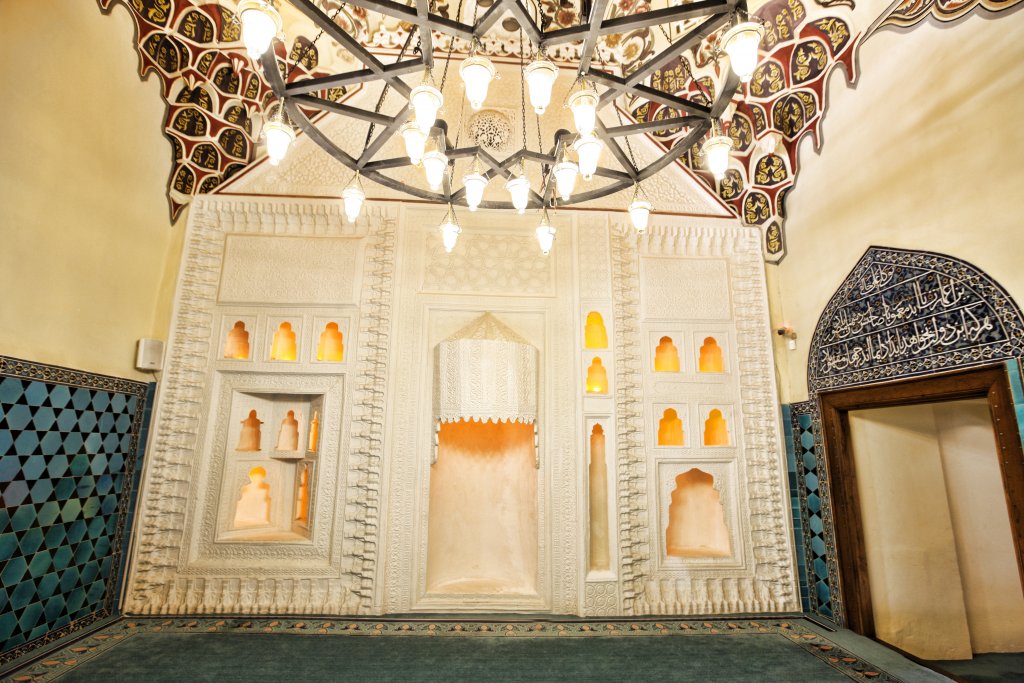
Minarets
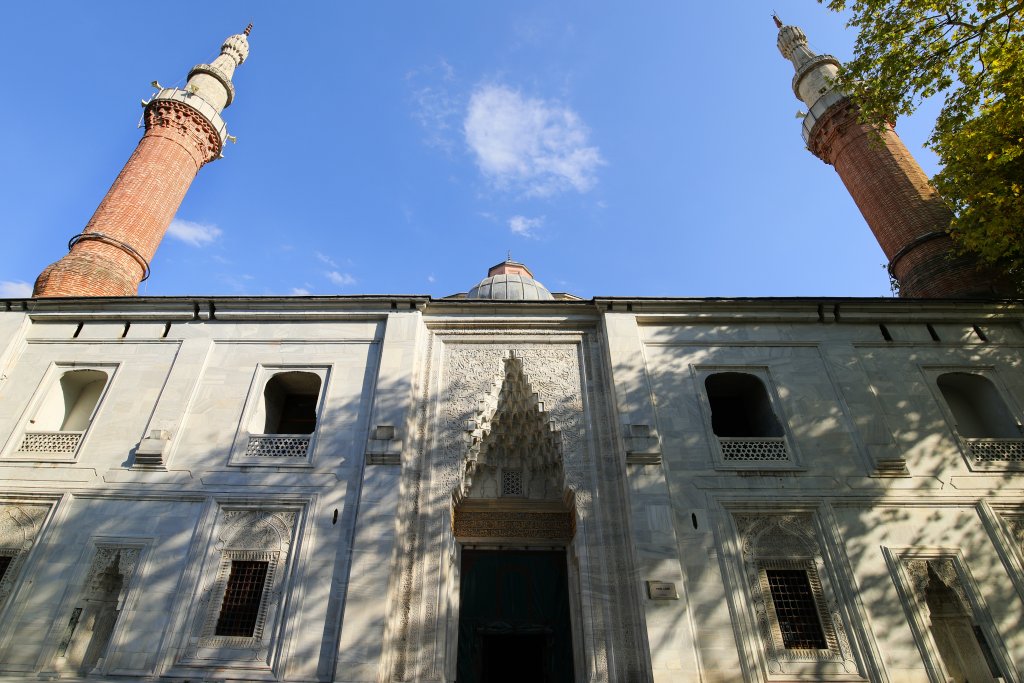
Yeşil Cami has two minarets on its northwest and southwest corners, added after the mosque’s original construction due to the 1855 earthquake. The original minarets were likely decorated with green ceramics, similar to those found on the minarets of İznik’s Yeşil Cami. The minarets have cylindrical bodies with intricate brickwork.
Exteriors
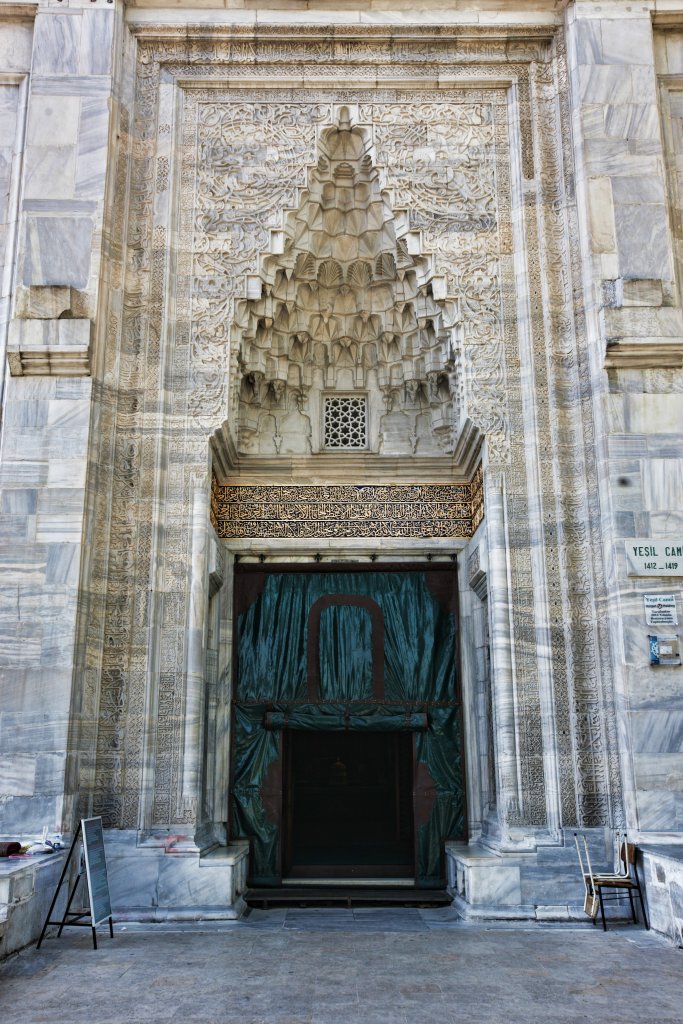
The exterior walls of the mosque are built with neatly cut stones. The rooms in the wings of the mosque served various purposes, some equipped with fireplaces and cupboards. The marble-framed windows display exquisite calligraphy in many instances. The wooden craftsmanship on the doors and window covers stands as an exceptional example of the era’s artistry.
Green Tomb
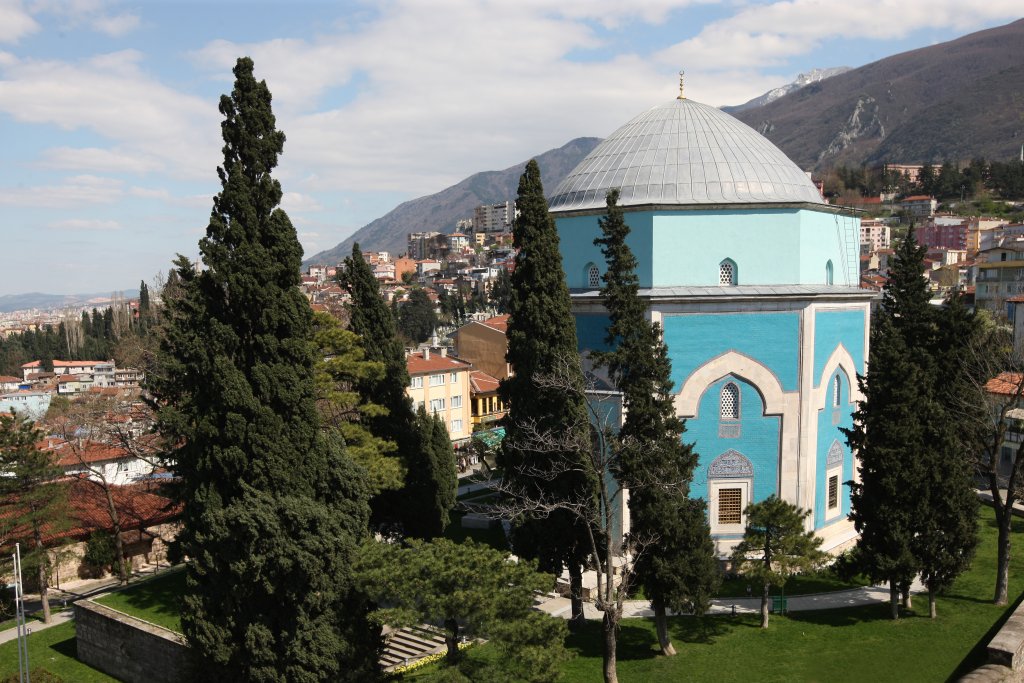
Across from Green Mosque stands Green Tomb, one of Bursa’s most valuable monumental structures, built in 1421 by Çelebi Sultan Mehmet. Designed by Hacı İvaz Paşa, the majority of the tomb is covered in green ceramics. Inside, alongside Çelebi Sultan Mehmet’s tomb, are the ceramic tombs of his sons Mustafa, Mahmut, and Yusuf, as well as his daughters Selçuk Hatun, Sitti Hatun, Hafsa Hatun, Ayşe Hatun, and their nanny Daya Hatun.

